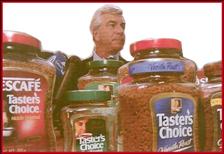Earlier this week, New York State Supreme Court Judge Joan Madden ordered Google to turn over account information about an anonymous blogger to model Liskula Cohen in order to enable her to pursue a claim of defamation. The blogger had used Google’s blogging service to create a blog entitled “Skanks in NYC,” and had posted pictures and references to the model that were anything but flattering, and which, she claimed, lost potential opportunities for her. When Ms. Cohen originally sought to find out who had posted the content, predictably Google resisted, maintaining that its privacy policy does not permit the disclosure of the blogger’s account information.
To put this in perspective, the protection of free speech—especially anonymous speech—is a concept in American jurisprudence and history that traces its roots to Thomas Payne’s pamphlet, Common Sense. First published in 1776, it anonymously challenged the authority of Great Britain in the New World and is widely regarded as the first work to openly ask for independence for the Colonies from Britain.
Since then, state courts have varied on just how wide those rights go and for what purposes protection is appropriate. Although I am hardly a First Amendment lawyer or a Constitutional scholar, the legal issue still seems simple. If the speaker—anonymous or not—is expressing ideas or an opinion or belief, he or she is more likely to enjoy protection. While there are limitations on freedom of expression (e.g., yelling “fire” in a crowded theater), political expression has typically enjoyed greater protection than “commercial” speech—one being fundamental to a society’s encouragement of the free flow of ideas, the other designed to promote a product, service or brand in a free market economy. On the other side of the spectrum and generally not protected, would be public expressions that are clearly and solely intended to hurt someone, where actual harm can be shown from intentional or malicious public expression or, as was determined by the New York court here, where an illegal act was or was likely to have been committed—in this case, defamation.
While it is difficult to pinpoint a single factor that will always favor protection, anonymity is a strong legal shield U.S. jurisprudence holds dear to protect individuals from the potential swords of those in power, or from anyone who might seek to stifle dissent or ideas that might be unpopular. For example, in 2005, a blogger who ranted against a politician, accusing him of “obvious mental deterioration,” was ultimately protected by the Delaware Supreme Court expressing concern over the potential “chilling effect” on anonymous speech. The blogger in this case was referring to a politician, and the court ruled that in order to justify revealing the identity of an anonymous blogger, the plaintiff must provide evidence sufficient to all the elements of the claim if the case were to go to trial. Because the court concluded no reasonable person would believe the blogger’s statements to be factual, no action for defamation could be sustained, and the court dismissed the case. You can read the Delaware Supreme Court’s decision in full right here, but clearly for bloggers, this represented a significant landmark and affirmation of the substantial protection afforded anonymous posting.
In a subsequent 2008 case, a Maryland Court of Appeals decision (Independent Newspapers, Inc. v. Zebulon J. Brodie) similarly concluded that anonymous posts should be protected, and set out an approach first detailed in a New Jersey case (Dendrite Int’l, Inc. v. John Doe No. 3) describing the steps judges should take in deciding whether to compel disclosure of anonymous online speakers in cases that come along in the future.
Unlike the previous cases, and potentially distinguishing this case, is the fact that the blogger here targeted Ms. Cohen intentionally, exclusively, and individually; and while the defendant argued the postings were just “trash talk” and only opinion, Judge Madden noted that if Ms. Cohen could prove the blogger’s statements were factually inaccurate, it would refute the argument that the posts were merely opinion and would support a legal claim of defamation.
As we have previously noted in Legal Bytes in articles describing the FTC’s efforts to regulate the blogosphere, and in presentations we have made, it is clear that online speech is coming under increased scrutiny, and that regulators and courts appear to nibbling away at the virtually complete immunity anonymous bloggers once seemed to enjoy, seeking to define the contours of what is or is not permissible conduct on the web. Does anyone remember the term “netiquette”?
For more information, or for assistance with issues like these or any social media, online, digital content, gaming or matters that meet at the crossroads of advertising, technology & media, look up Joseph I. Rosenbaum, send me an email, or contact the Rimon attorney with whom you regularly work. We are happy to help.


